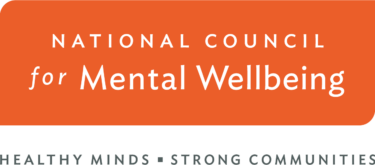Spring is often associated with renewal, as melting ice and lengthening days signal winter’s retreat. In Alaska and other northern regions, this transition is known as “spring breakup,” a dramatic period when snow and ice yield to rushing rivers and thawing ground.
This seasonal shift brings not just puddles, mud, and the rubber boots Alaskans aptly nickname “breakup boots,” but also a complex interplay of challenges. The thaw marks a time of heightened mental health struggles, rising suicide rates and increased substance use, underscoring the profound influence of environmental changes on our wellbeing.
Spring’s Emotional Impact
Seasonal affective disorder (SAD), commonly associated with winter, has a less-discussed counterpart that occurs during the transition from spring to summer.
Spring’s warmer weather and increased daylight can destabilize mental health. The increase in sunlight during this period can disrupt the delicate balance of melatonin and serotonin, leading to anxiety, agitation and depression. This imbalance often drives the use of substances like alcohol, cannabis or opioids as a means of self-medication. People with SAD, who are more likely to have a co-occurring substance use disorder than the general population, are particularly vulnerable.
It’s a common misconception that suicide rates reach their apex in winter, but the truth is U.S. suicide rates are highest during spring, peaking in April and May. One theory suggests that the energy people regain energy after winter’s lethargy can amplify their ability to act on suicidal thoughts, making this seasonal transition particularly dangerous.
Spring’s heightened risk of suicide parallels notable shifts in substance use patterns. Research consistently indicates that substance use rises in spring when we find higher rates of alcohol and opioid consumption. Studies among college students have found an 18% increase in drinks per occasion from early to late spring. Overdose deaths, emergency calls related to overdoses and suicidal behavior with prescription opioids also reach their highest levels during these months.
Warmer temperatures are linked to higher rates of crime, interpersonal conflict and alcohol-related incidents. The reasons are likely both physiological and behavioral, rooted in well-documented environmental triggers like temperature and light exposure. Longer days and warmer temperatures can affect mood, disrupt sleep patterns and alter social rhythms, compounding the risk factors for substance use and mental health challenges. These subtle, yet powerful, environmental influences highlight the need for greater awareness and proactive interventions during seasonal transitions.
Practical Solutions for Seasonal Transitions
Spring breakup demands bold strategies to tackle mental health and substance use head-on. Clinicians and public health professionals should spotlight the behavioral health risks tied to shifting light exposure and temperatures, and encourage proactive care. Simple preventive measures, like using light lamps to stabilize circadian rhythms, taking vitamin D supplements to address deficiencies, maintaining a balanced diet, regular exercise and seasonal medication adjustments can help individuals manage cravings amid mood changes. For those with substance use disorders, structured routines and expanded access to crisis hotlines offer added protection.
Simple preventive measures, like using light lamps to stabilize circadian rhythms, taking vitamin D supplements to address deficiencies, maintaining a balanced diet, regular exercise and seasonal medication adjustments can help individuals manage cravings amid mood changes.
Expanding counseling services, peer support and community-based connections can counter the lingering isolation of winter, providing crucial support during transitions. Social connection is another reliable buffer against substance use and mental health challenges, a safety net during high-risk periods. Together, these interventions can foster resilience and wellbeing as individuals navigate spring breakup.
Turning Awareness Into Action
Spring breakup is a vivid reminder of how deeply intertwined our environment and wellbeing are. The melting ice and longer days may symbolize renewal, but they also uncover hidden vulnerabilities that require our attention. By understanding the powerful role seasonal transitions play in shaping mental health and substance use patterns, we can cultivate a more compassionate and responsive approach to care. The shifting ice reminds us that addressing substance use requires recognizing and responding to the ever-changing patterns of need across the seasons.
Author
Senior Advisor, Substance Use Disorder in the Strategy and Growth Office
National Council for Mental Wellbeing
See bio




